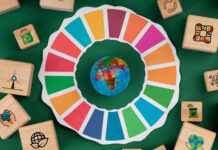These last two seasons, Perpignan came close to being penalized in the Top 14, twice finishing 13th and penultimate in the elite and snatching its place during the accession/relegation play-off on the lawns of Mont-de-Marsan (16- 41) and Grenoble (19-33), unfortunate finalists of Pro D2.
This year, things seem much better off since six days before the end of the regular season, the Catalans are ninth with six points ahead of Montpellier, the 13th. And, currently, Usap has the wind at its back since it remains on three successes in a row (Toulouse, Oyonnax, Castres). Only Racing 92, third in the standings, did as well over the same period.
Proof of their current good form, the Perpignans offer an attractive, offensive and ambitious game. Far from the cliché of the cowering and paralyzed team struggling to maintain its position. During the brilliant success against Castres at Aimé-Giral (43-12), the Sang et Or, unleashed, scored seven tries. “We felt that we were very excited, with the desire to hit hard, and we knew how to channel our energy. We treated ourselves to a quarter of an hour of madness at the start of the second half,” said Franck Azéma, the manager of the Sang et Or who do not seem paralyzed by the fear of relegation and, on the contrary, offered a ambitious rugby.
A team that shows “character”, as Franck Azéma repeats over and over again. “We must have this state of mind until the end of the season of not giving up,” repeats the technician who worked at Clermont and Toulon. Without a European Cup to play, the Catalan club has weeks to regenerate and prepare by leaving for training on the heights of Falgos. And the two matches which are looming, against Lyon and Montpellier, two rivals for maintenance, will promise to be crucial. “We don’t invent anything extraordinary but we define objectives,” explained Franck Azéma in Midi Olympique. Perpignan is thinking about holding on and we are preparing to host a great team from Lyon.”
The tightening of the elite, especially in this choppy post-World Cup season where the big teams have suffered, means that Perpignan is today at the crossroads: sandwiched between 13th and 6th, synonymous with the final phase. Can the Catalans think higher or is it unrealistic? “We’ll see what we plan on but when I hear about the final phase, it’s a circus,” says Franck Azéma. Same restraint on the side of the Australian center or winger Afusipa Taumoepeau who declared to Actu Rugby: “With our experience, we see that everything can change in the space of a weekend. This championship is still tight so we are not looking ahead for the moment. We try to stay humble and always work well during the week.”
Whatever happens, the fervor of the Catalan public, well aware of what is at stake in Saturday’s match, will push hard against LOU. This will be the sixth time this season that Aimé-Giral will be sold out, an arena where the four-time French champion club (1938, 1944, 1955 and 2009) has been undefeated for eight games. While waiting for the red-and-yellow wave which should march through Montpellier.
The MHR voluntarily closed its ticket office to prevent Perpignan supporters from rushing for tickets. Mohed Altrad justified himself, laughing: “The Perpignan public must not invade us during the meeting. It remains the Montpellier stadium, it is not Aimé-Giral…” But this should not prevent a large transhumance of the Catalans among the Hérault neighbors.


